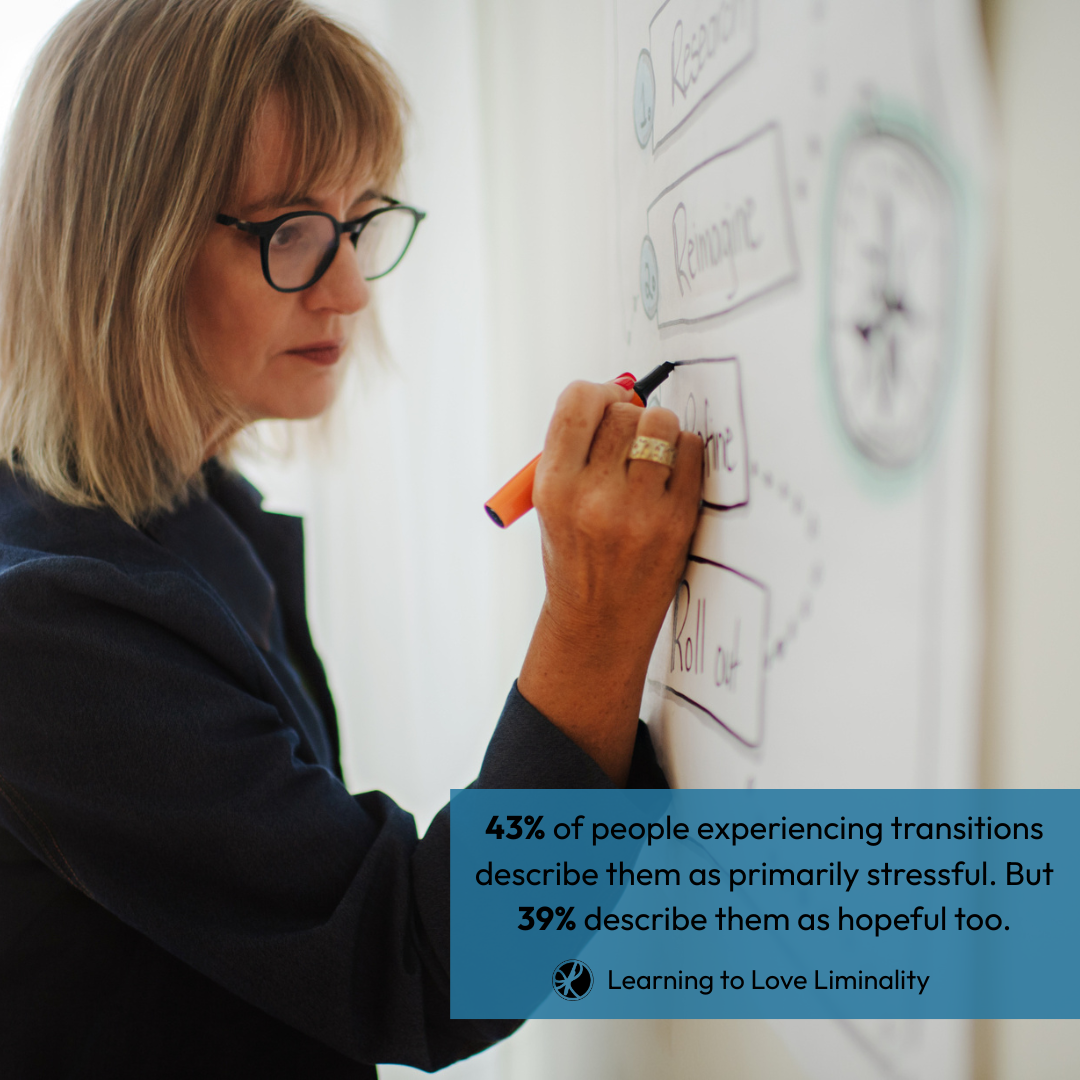How high is your mess tolerance?
You can gauge your answer personally — how do you feel about clutter in your house? Unfinished tasks on your to-do list? Uncertain outcomes?
You can also gauge it collectively — how well does your team or organization do with staying the course amid noise, volatility and curveballs? Or even just coping with threads left dangling at the end of a meeting?
I’ve become a fan of Gill Deacon’s podcast “A Love Affair with the Unknown” and it has me thinking about our relationship with uncertainty. Can we actually learn to love it?
Today I’m starting a new series on learning to love liminality.
A liminal space is a threshold. It’s a not yet time, where one door has closed but another one has yet to open. It’s the “messy middle.”
We spend a lot of time there.
But our nervous system doesn’t like it.
I recently commissioned research that involved 1,219 midlife participants in Canada and the US currently experiencing transitions. 43% of those respondents described the emotional tone of their current season as “stressful” — the highest-rated option among ten emotions listed.
I’ve become curious about finding tools to help people live more contentedly in the in-between — partly because I see the panic it induces. The untethered feeling is so uncomfortable for most of us that it often results in people making quick decisions to resolve the uncertainty (think saying yes to the first offer than comes, even if it’s not great), rather than being willing to sit in the unknown for a bit longer.
But tolerating uncertainty is very different than liking it. What if we set the bar even higher?
The second highest emotion being experienced by people in midlife transitions? Hope.
That’s the one I’d like to amplify. So watch this space — let’s see what we can find out together.


